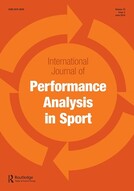
The data in the paper is from all senior inter-county championship games for the 2018, 2019, and 2020 seasons. The primary purpose of the paper is to distinguish between winning and losing teams in terms of a range of performance indicators. However, it can also be used to give a picture of what constitutes the small-ball & stick game two decades into the 21st century. Hurling, like economics, is ever changing.
On average there are 74 shots (or score attempts) per 70+ minutes of a game. Sixty-seven (67) of these shots cross the opponent’s end-line for either a score or a wide (zero points). Then, the game is restarted by a puckout. There is a wealth of analysis on what happens with these restarts. Heat-maps detailing where on the playing area the puckout is directed. Tables showing who wins these puckout and how it differs depending on the distance the ball travels. It is a prime example of how the game has changed. If the data was collected for the late 20th century then the figures in the rows for short puckouts would be close to zero. In those days, "going short" meant dropping the ball 70m away rather than 85m away!
The authors note a considerable shift towards shorter puckouts in 2020. The acceleration of the longer-term trend is probably due to the pandemic but no explanation is offered in this paper (maybe a further paper is coming). The pandemic had three important implications. First, it changed the competition structure to reduce the number of games. In 2018 and 2019 a round-robin regional structure determined who progressed to the later All-Ireland stages. In 2020 the regional competitions became single-game knockouts with success in the regional competition determining the stage of entry to All-Ireland competition. Second, the pandemic meant that the games were played in autumn/winter compared to the summer. Third, the pandemic also meant that the games were played without spectators at the venues. My speculation is that the first two might have slightly contributed to longer puckouts but that the absence of crowds contributed to shorter puckouts in a big way. Speculation.
There is also tabulated data and graphs detailing how possession is lost or turned over to the opposition (84 turnovers per game). For example, possession is frequently lost in the tackle. It is the third most frequent way possession is lost or turned over. It is a very important part of the game. However, there is not a statistical difference between winners and losers. As Paul O’Brien and his co-authors say, “Tackling is not a significant factor that differentiates winners and losers, despite being portrayed in the media and public discourse as such”. I wonder will we hear and read less of "the team that wins the tackle count wins the game"?
It would be interesting to see how the authors would code the "tackle" if they viewed games from the 20th century. My guess that there would be very few modern day tackles where bodily contact dislodges the ball. A current favourite tackling technique is to use the arm, that is not holding the stick, to make contact with an opponent. The further back in time that one goes, one is likely to find that players kept both hands on the stick when attempting to turnover possession. Frequently, it was the stick that made contact with the opponent. This was done with varying degrees of force and legality. Not only could it turnover possession, it discouraged players from trying to retain possession themselves. The ball was transferred as quickly, and as far away, as possible. Different times. The game evolves. What players do defines the game. Hurling is what hurlers do. A good picture of hurling in 2021 is provided by Paul O'Brien and his co-authors.
 RSS Feed
RSS Feed